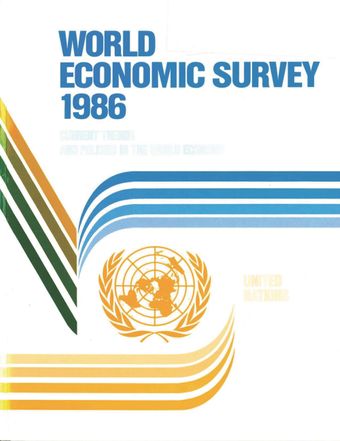- Home
- Books
- World Economic Survey 1986
- Chapter
International finance and balance-of-payments disequilibria

- Author: United Nations
- Main Title: World Economic Survey 1986 , pp 63-87
- Publication Date: April 1986
- DOI: https://doi.org/10.18356/a71477d5-en
- Language: English
A sea change in international finance is taking place in the mid-1980s. At the institutional level, the nature of international financial intermediation has been radically altered by both structural factors and the progressive deregulation of financial markets, as discussed in the World Economic Survey 1985.1 At the level of national economies, changes have also been dramatic. The world’s largest creditor country until 1982, the United States, will have become the world’s largest net debtor by the end of 1986. Unprecedented balance-of-payments surpluses have emerged in certain developed countries, particularly Japan and the Federal Republic of Germany. Developing countries continue to face serious debt-servicing difficulties, and a substantial inward transfer of resources from abroad has been turned, since 1983, into a reverse transfer of resources. Most developing countries find it increasingly difficult to mobilize international liquidity through traditional channels of private and official finance. Important policy changes have also occurred. Their aims include reducing payments imbalances among major industrial countries and strengthening supply-oriented adjustment programmes in a context of faster economic growth. The initiatives taken point in the right direction. Nevertheless, current trends suggest the need for additional measures in the realm of international finance, in particular with respect to developing country debt and liquidity, as discussed in this chapter.
-
From This Site
/content/books/9789210452151c006dcterms_title,dcterms_subject,pub_keyword-contentType:Journal -contentType:Contributor -contentType:Concept -contentType:Institution105



